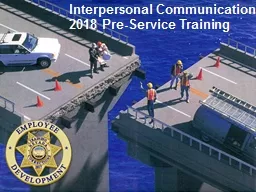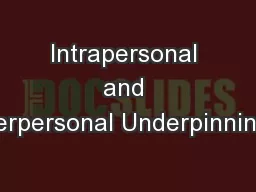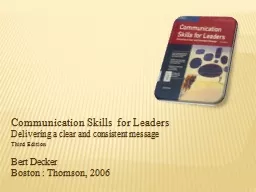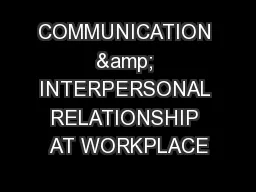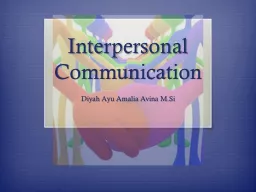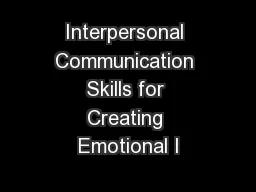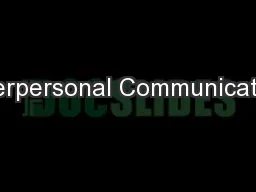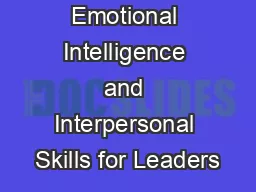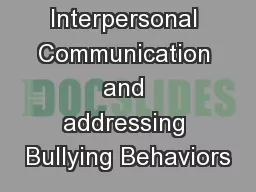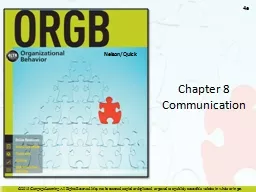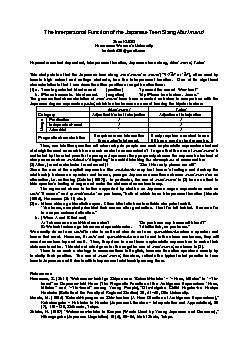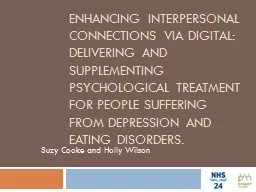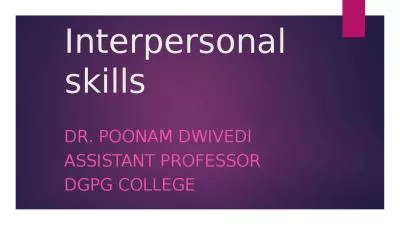PPT-Communication Skills Interpersonal Communication
Author : stefany-barnette | Published Date : 2018-09-25
2018 PreService Training Instructional Goal The student will be able to effectively and efficiently communicate both verbally and nonverbally with the public coworkers
Presentation Embed Code
Download Presentation
Download Presentation The PPT/PDF document "Communication Skills Interpersonal Commu..." is the property of its rightful owner. Permission is granted to download and print the materials on this website for personal, non-commercial use only, and to display it on your personal computer provided you do not modify the materials and that you retain all copyright notices contained in the materials. By downloading content from our website, you accept the terms of this agreement.
Communication Skills Interpersonal Communication: Transcript
Download Rules Of Document
"Communication Skills Interpersonal Communication"The content belongs to its owner. You may download and print it for personal use, without modification, and keep all copyright notices. By downloading, you agree to these terms.
Related Documents

